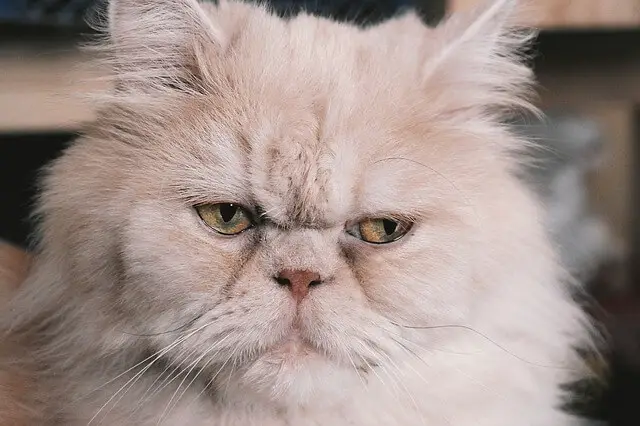
Persian
There aren’t many cats as classy and elegant as the amazing Persian. This reasonably popular breed makes a fantastic lap cat if you’re patient enough. These cats are known to be somewhat relaxed and easygoing. However, if they are mistreated, don’t make the mistake of thinking they will not let anyone know what they’re feeling. They can be patient, but if a child or another pet bothers the cat too much, they will scratch them.
If you’re interested in this breed, you will probably want to know some basic information about them. Persians have a fascinating history, and you are right to be interested in these fluffy little purring machines.

Length:
14–18 in

Weight:
7-12 lb

Origin:
Mesopotamia (Persia)

Life Expectancy:
10-15 years
Breed History
The Persian cat originated in the cradle of civilization - Mesopotamia. After Mesopotamia, that area became Persia, and today it is Iran. That makes the Persian an ancient breed. They were unknown in Europe until the middle of the 17th century when an Italian nobleman Pietro Della Valle introduced them to Italy. It took nearly 2 centuries for Persians to come across the Atlantic and into the US. They were first introduced to American cat fanciers in the late 19th century. Its charming appearance made it pretty popular. It took the place of the Main Coon as the longhaired breed of choice for American owners.

Cat Breed Characteristics
One of the first things you should know about the Persian is its official characteristics. This is an internationally recognized cat breed, and the way they should look is pretty well documented. Here are the essential characteristics you can expect from a Persian cat.
Coat
The Persian has a fine-textured double coat that’s long, thick, and rather shiny. They have increased ruff around the neck, long tufts on ears and toes, and a deep frill between front legs.

Coat Color
This cat breed comes in all sorts of colors and combinations of colors. Persians can come in solid colors or a combination of those colors. Some of the colors you can see are white, blue, lilac, white with other colors (harlequin), silver, shades of silver, golden, shades of golden, smoke, or tabby. The color of the cat’s eyes should correspond to the color of its coat.
Size
The Persian is considered a medium-sized breed. These cats should reach 7 - 12 lbs and reach a length of 14 - 18 inches without the tail. They often appear bigger because of their thick coats.
Temperament
The most important thing about any cat breed you are interested in is temperament. If you’re looking to buy a purebred cat, you should know what you can expect. That is extremely important if you have other pets or children at home.

These cats are calm and easygoing, but they are not the best choice for households with active toddlers or other pets that might bother them. The Persian will get along great with kids that can be very gentle with them and give them attention under the Persian’s conditions. They will also get along with lazy dogs they can snuggle with and use as their personal heaters. They will not tolerate rough handling or anything that causes them anxiety. Other than that, these cats will love sitting on your lap and being gently petted. They might love humans, but most are reserved and reserve their trust for family members.
Health
No matter what type of cat you have at home, they might be prone to health issues. The Persian has a somewhat flatter face, which means it is prone to specific respiratory issues. Some of the most common health issues Persian owners and veterinarians noticed are;
- Excessive tearing
- Cherry eye
- Entropion
- Polycystic kidney disease
- Seborrhea oleosa
- Prone to ringworms
- Constricted nostrils
- Dental malocclusions
World Cat Finder Team

Updated at20.12.2021.

Share